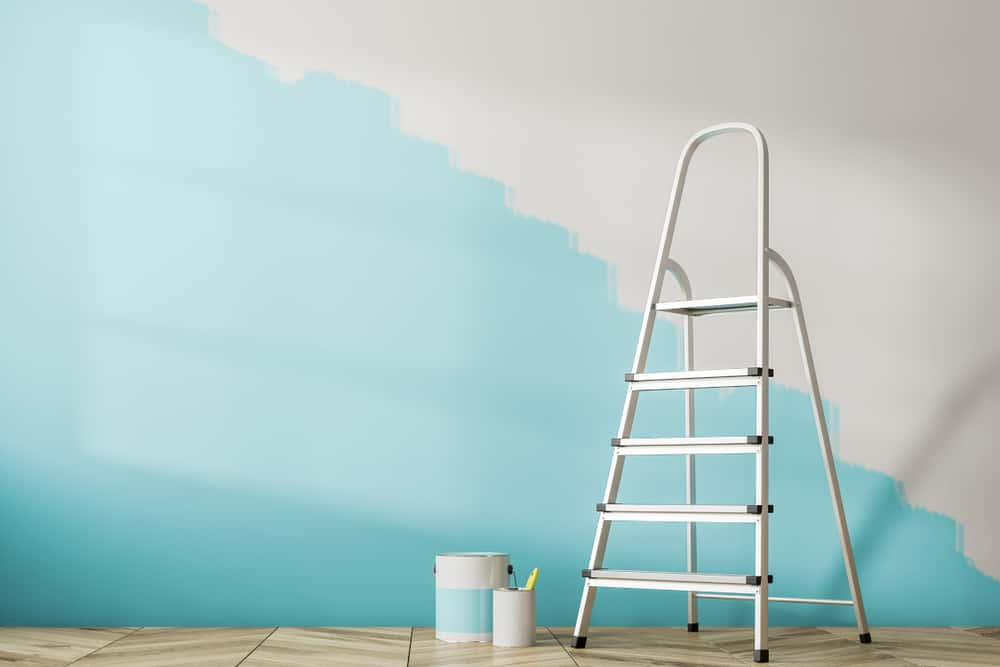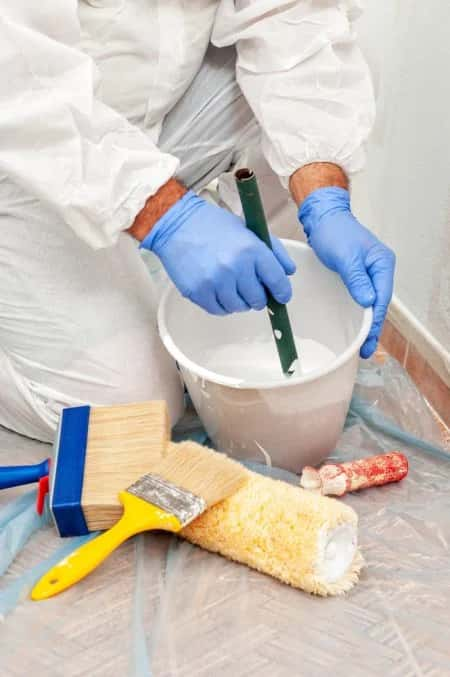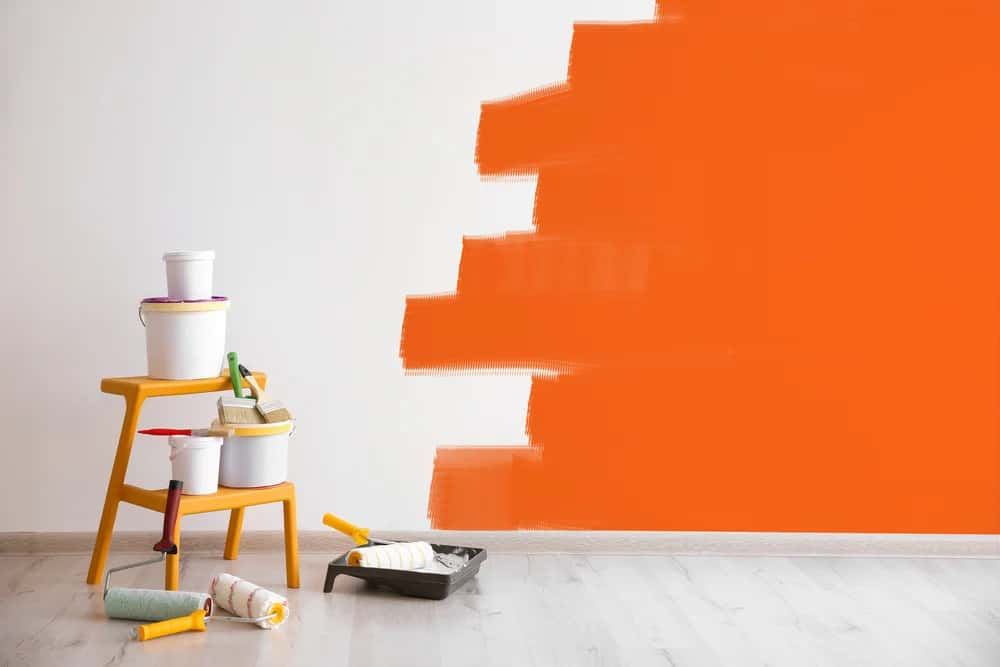Looking to get your home painted but don’t know the first thing about choosing the right paint? You might have read a lot about the colour palette, shades on the colour wheel and décor themes, but you are probably lost when picking the right type of wall paint.
To make an informed choice, you should know the pros and cons of each type of paint.
We’re here to help with that! Here’s a complete overview of distemper vs emulsion that you can follow to choose between the two.
Popular Paint Choices for Interior Walls
Emulsion and distemper are the two most popular paint choices for interior walls. Here’s a short introduction to the two paints.
Distemper Paint
There are two types of distemper paints, oil-based and water-based (or dry) distemper. Water-based distemper is less durable than the oil-based variety and is much less durable than emulsion.
When comparing distemper vs emulsion prices, distemper is cost-effective and often used for rental properties where a fresh coat of paint has to be done every year.
Emulsion Paint
Emulsion paint gives a silken smooth finish with excellent coverage and is the most popular choice for home interiors. However, it is more expensive than distemper paint.

Distemper vs Emulsion: Features
If you are looking to compare the features of distemper vs emulsion paints, here is a list of factors to be considered:
| Distemper | Emulsion | |
| Odour |
|
|
| Composition |
|
|
| Coverage |
|
|
| Finishes |
|
|
| Durability |
|
|
Distemper vs Emulsion: Material Comparison
| Distemper | Emulsion | |
| Cost |
|
|
| Environmental impact |
|
|
| Range of colours and colour fastness |
|
|
| Ease of application |
|
|
| Surface preparation |
|
|
Distemper vs Emulsion: Market Availability
The difference in emulsion vs distemper price is stark: distemper is available in the market for upwards of Rs 25 per litre, while the costs of emulsion paints range from Rs 120 to Rs 600 per litre.
Tractor emulsion, a lead-free matte paint, is one of the cheaper options for emulsion paint, but if we compare distemper vs tractor emulsion, distemper still comes out as the cheaper option.
Some leading brands for all paints available in the market are Asian Paints, Berger, Shalimar, Jenson and Nicholson, Nippon, Nerolac and Dulux.

Distemper vs Emulsion: Budget
If you have a budget constraint or are planning to give the house for rent, distemper is a cheaper choice and thus wins the emulsion paint vs distemper debate.
However, do keep in mind that at a later date, if you wish to swap the paint for emulsion, the entire surface has to be scrubbed to remove the distemper coat. It is not possible to paint emulsion over distemper as the paint will not ‘stick’.
So here, the choice of distemper vs emulsion depends on your needs and means.
Distemper vs Emulsion: Material Finish
Surface preparation, such as primer and putty, is not required for distemper. The finish will also not be as silken smooth, and clean. Distemper paints typically give a more rustic finish as compared to emulsion paints.
However, higher grades of washable synthetic distemper are available that cannot easily be visually distinguished from emulsion paint.
If you want a smooth surface finish without any undulations, consider using several coats of putty, allowing each coat to dry completely before sanding it to a smooth finish.
Here again, the right option of emulsion paint vs distemper depends on what you’re looking for.
Tips to Incorporate Using Distemper and Emulsion Paints
- Dry distemper is available as a powder and can be mixed with pigment and water to the desired hue. The binders may be natural or synthetic.
- When you are changing the colour of a wall from a dark shade to a lighter one, several coats may be needed to achieve full coverage of the darker shade below. However, when you paint a darker shade over a lighter one, the number of coats required may be less.
- When the paint is still wet, you cannot see the true finished colour. Wait till it is dry.
- Before you paint, fill in holes and cracks with plaster, allowing it to dry completely. Clean and dry the surface, ensuring it is free of dust.
- While painting, keep the room well-ventilated so that the fumes do not get overpowering.
- It is best to avoid painting during the monsoon as you will not get the best results.
- If there is any area that you do not want to paint, cover the boundary with a neat strip of painter’s tape.
- Always start with the ceiling before moving on to the walls. Cover light fixtures, curtain pelmets and fans to avoid splashes. Glass panes can be covered with newspaper, so they do not get streaked with paint. Also, ensure that the entire floor is covered with heavy plastic or newspapers.
Conclusion
It’s easy to get confused about your paint choices, given the sheer range of products available in the market today. Use this distemper vs emulsion guide as a reference if you’re confused!
If you still need help narrowing down your selection, don’t hesitate to reach out to our team at HomeLane. We’re always happy to help!
FAQs
1. Which Is Better: Emulsion or Distemper?
The better choice of distemper vs emulsion depends on numerous factors. Let’s look at a brief comparison of the two paints to understand some of them.
- Distemper paint gives a textured and rustic finish, whereas emulsion paint exudes a silken smooth finish.
- When it comes to fading of the colour in distemper vs emulsion paint, emulsion paint wins, as its colour sticks on for much longer than that of distemper paint.
- Emulsion paint has a less distinctive odour than distemper paint.
- Distemper paint isn’t completely washable, while emulsion paint is much easier to clean.
- Emulsion paint is available in a variety of shades, while that is not the case with distemper paint.
- The lifespan of distemper paint is lesser than that of emulsion paint.
- When it comes to applying distemper vs emulsion paint on your walls, it is much easier to apply than emulsion paint, which needs a primer and putty quoting beforehand.
- Emulsion paint takes a much longer time to dry out than distemper paint.
- Unlike distemper paint, emulsion paint doesn’t start peeling off when wet.
- Emulsion paint is much more expensive than distemper paint.
It is clear that emulsion paint outshines distemper paint on many factors, but it does have just a few vices of its own. So, ultimately, the winner of the debate of distemper vs emulsion depends on your requirement, suitability, and affordability.
2. How Long Does Distemper Paint Last?
Distemper paint can last for around three to five years. This implies that you will need to get your home repainted with distemper paint every four to five years.
Popular Services
Modular Kitchen Designs | Home Interior Designs | Wardrobe Designs | Living Room Designs | Bathroom Designs | Space Saving Furniture | Home Office Designs | Pooja Room designs | Foyer Interior Design | Kids Bedroom Design | Interior Lighting Design |False Ceiling | Home Wallpaper | Furniture Design
Popular Locations
Modular Kitchen In Ahmedabad | Modular Kitchen In Mumbai | Wardrobe Designs In Chennai | Wardrobe Designs In Delhi| Interior Design In Mumbai | Interior Design In Delhi
Popular Blogs
Party Ideas for Holi | Assam Type House Design | Pop Designs for Bedroom | Window Grill Design | Plinth Area | MDF Vs Particle Board | Wall Colour Combinations | Vastu Shastra Colors For Living Room | Classical Interior Design | Wardrobe Dimensions | Parapet Design | How To Prevent Dust In Room | Types Of Kitchen | Wall Panel Design | Small Modular Kitchen | Pooja Room Design| HDF Wood | French Door Design | Bedroom Wardrobe | Solid Wood Vs Engineered Wood | Athangudi Tiles





